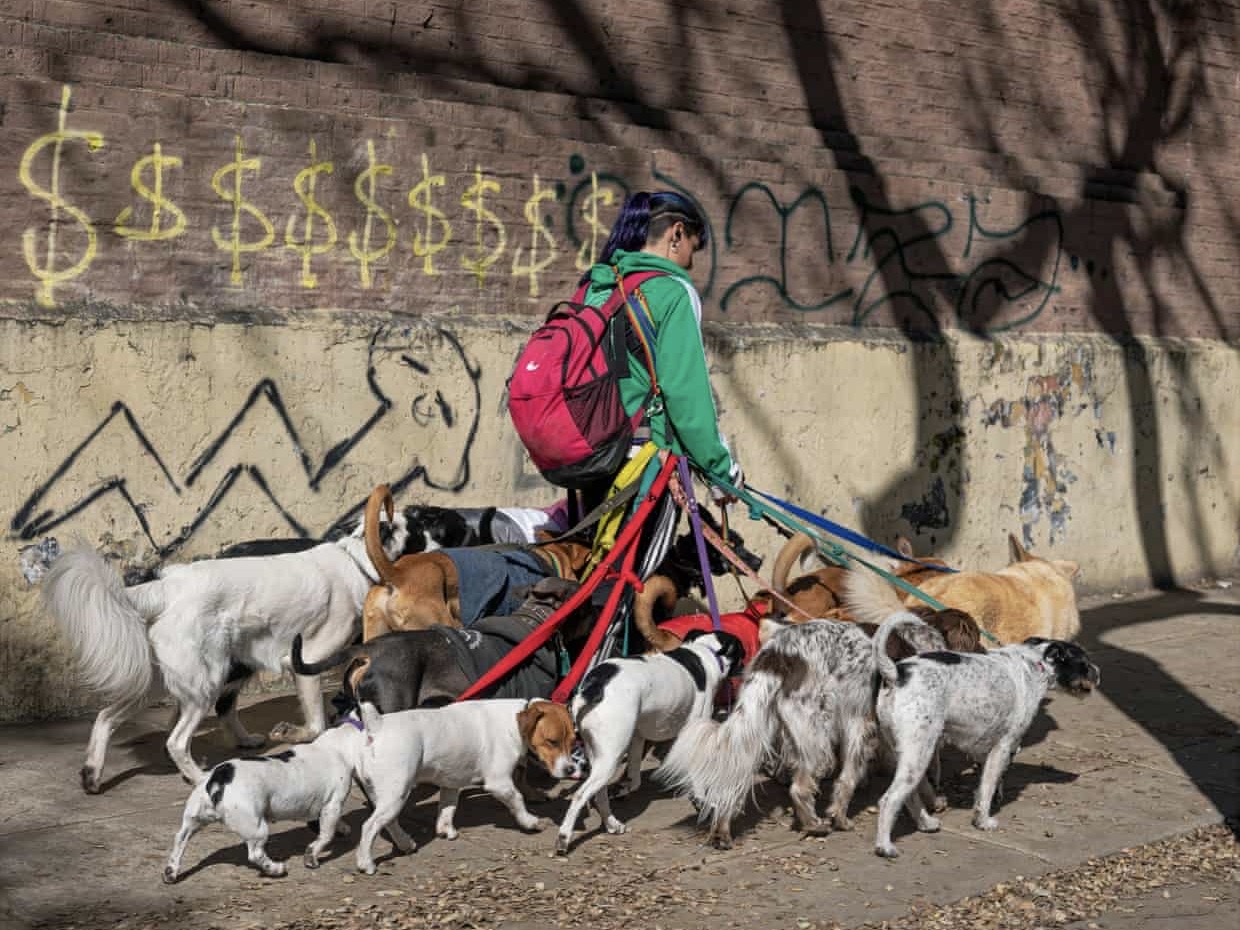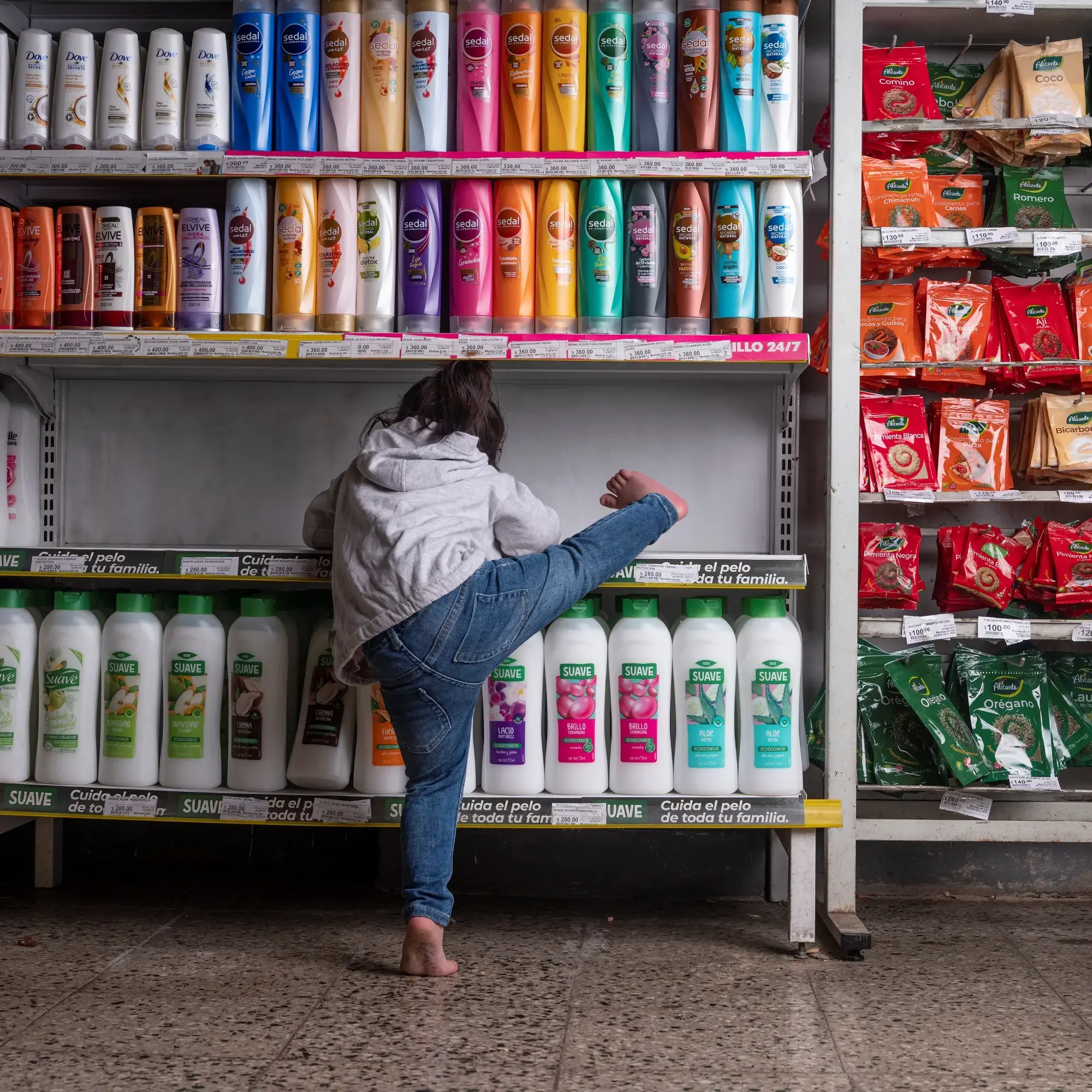
Inflation is a reality of daily life for Pulitzer Center grantee Irina Werning, who grew up in Argentina. Her personal experience as an Argentine and her background in economics had shown her how people adapt to their money losing value. So when inflation rates started to spiral out of control around the world after the COVID-19 pandemic outbreak and Russia’s invasion of Ukraine, Werning was uniquely positioned to cover the issue.
As a photojournalist, Werning experimented with different forms of visual storytelling. She wanted to show that inflation is more than just a business buzzword, but affects everyone, from the makeup store clerk to the woman walking dogs down the street. Werning’s work resulted in Inflation!, a diverse collection of portraits and stories from all walks of life in Buenos Aires.
What make Werning’s photos unique are an easy approachability and sense of humor. In stark contrast to the seemingly dull topic of inflation, Werning’s photos are whimsical and flamboyant. She breaks the barrier between journalism and personal life by photographing her husband and friends, demonstrating how inflation affects every intimate corner of our lives.
She focuses on her home country, which has a storied past with inflation. Argentina is currently at a 30-year high at 88% (compared to 7.7% in the U.S., which still poses a major issue). In Argentina, as one of her photos demonstrates, it is cheaper to plaster the walls with $10 peso bills than to buy wallpaper.
To expand this local focus, Werning published her photos in global outlets in English, Spanish, and German. The El País story “What Can Argentina Teach the World About Inflation?” summarized Argentina’s experiences in concepts that apply worldwide, such as inequality, change in consumption habits, and distrust in prices. Stories from The Guardian and Der Spiegel each offer their own analysis concerning international audiences.
Inflation! is Werning’s third project with the Pulitzer Center. She recently won the 2022 World Press Photo competition for her work titled La Promesa (The Promise), about a 12-year-old Argentine girl named Antonella, who refused to cut her hair during the COVID-19 lockdown until she could return to school. For another Pulitzer-supported project, Le Disidente (The Dissident), Werning photographed Tam, a transgender teenager returning to their hometown in Bolivia for the first time since transitioning.
Pulitzer Center Editorial Intern Grace Jensen spoke with Werning about her return to Argentina, her thoughts on rising inflation, and her experience photographing and learning from her subjects.
This interview has been edited for length and clarity.
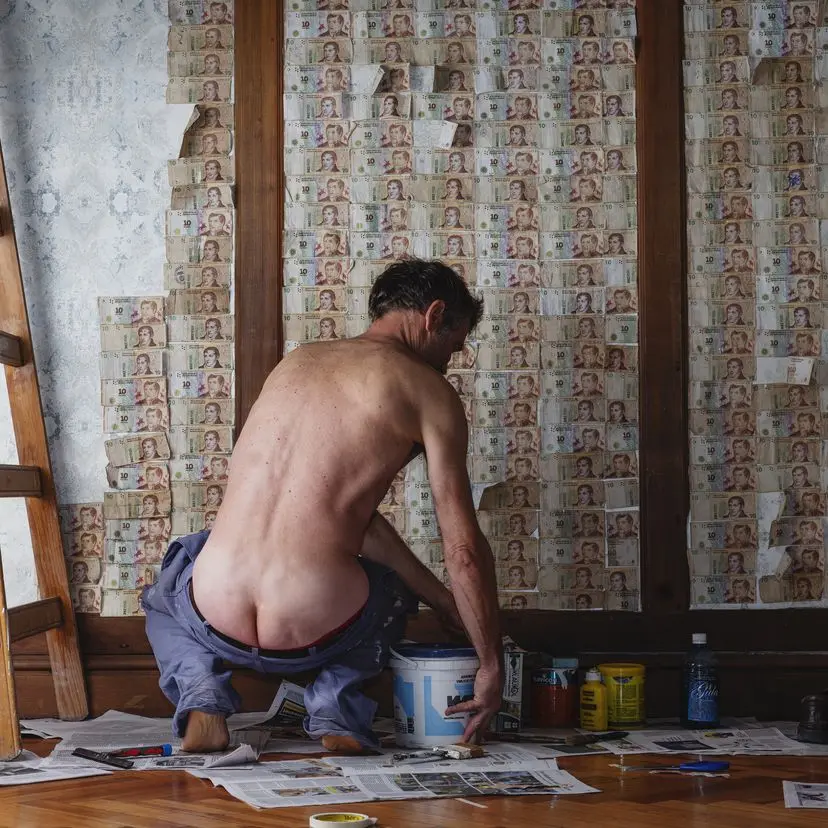
Grace Jensen: What has your journey in photojournalism looked like so far?
Irina Werning: My journey started very late, when I was 30 years old. I discovered photography then, I had never grabbed a camera in my life. And I had a very long journey to find my vocation, but I'm very grateful because I know people that never find it, so it's never too late. I studied something completely different, economics, then I did a master's in history. Then I traveled for around eight years in India, Southeast Asia, and the Middle East. And then when I was 29, I landed in London, where I worked as a sociologist. That's where I discovered photography.
Now, I look back to my 20s, and in a way I like to think that I was observing the world. Back then, I did feel very anxious to find something to do that I would feel passionate about. But it took me a long way around to find it. And then I discovered photography because I read an interview in a magazine where a photo editor was talking about the life of a photojournalist. So I emailed the editor, and I went to see him. And when I went to see him, he told me, I'm the director of an MA [Master’s] in photojournalism, why don't you do this? So I applied for a scholarship, and I got it. And I eventually did the MA with this photo editor, thinking that I was going to do photo editing. And then straight out of the university, I won a very important award in the U.K., called the Ian Parry scholarship. And they sent me to do a long-term project for a year. And that's when I never looked back. So I think it was a series of coincidences.
GJ: And how was it for you coming back to Argentina after being in London?
IW: It was great. Once I started photojournalism, I stayed a few years in London, but I knew that I wanted to tell the stories from my region, from my country. I think there's nothing like telling your own stories. It doesn't mean that someone from outside can't do a great story about some other place. But I think, for me, having been abroad for so many years and then coming back here gave me a wider vision of my own country in the context of the whole world. So I think that really helps me to tell stories from here.
"There's nothing like telling your own stories."
GJ: Yeah, definitely.
IW: It's like once I heard someone say, if you only know Argentina, you don't know Argentina, or I don't know what country they were mentioning. It's like you need to understand your country, you need to also understand the rest of the world, and then you get to know which are the particularities of your country. Because otherwise, you don't know what is characteristic of your own country.
GJ: Kind of a reference for comparison?
IW: Yes, exactly. Like, for example, the project of long hair, I think if I wouldn't have lived abroad, I would have never picked it up. Because it was living abroad and seeing how no one has long hair, and then coming back here and seeing, wait, this is very Latin. For me it was normal, but this is not so normal. This is something particular to here and I want to investigate why, I want to understand why. But I think if I hadn't lived abroad, perhaps I wouldn't have identified that story.
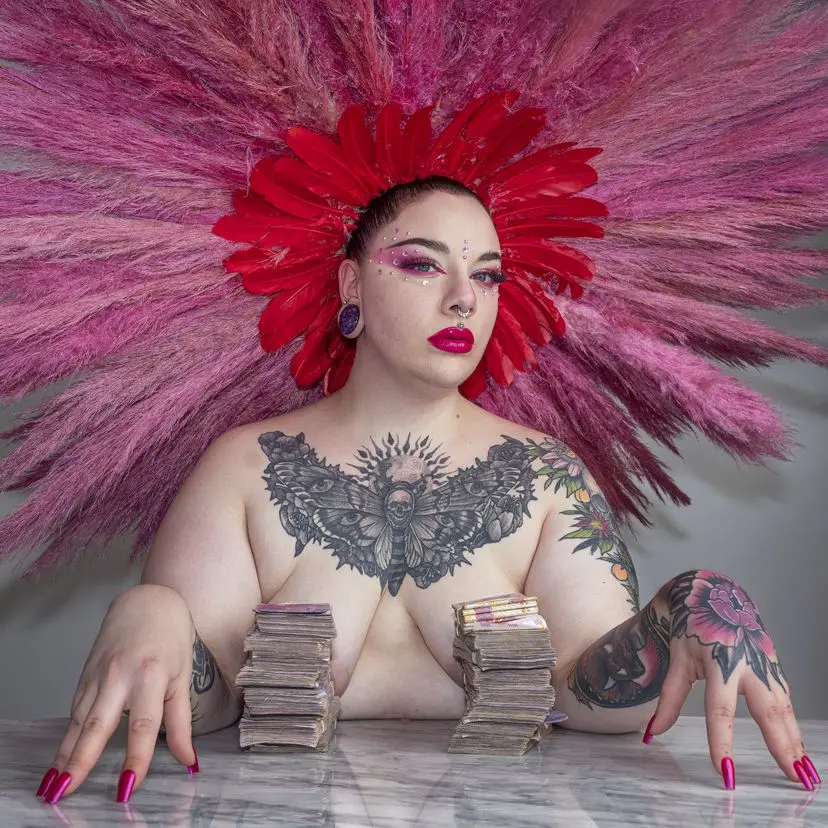


GJ: Yeah, that makes sense. So you've said that inflation has become a part of everyday life in Argentina, even since you were a child. So how has inflation influenced your life personally? And do you think that that inspired you to take on this project?
IW: Yes. Human beings’ behavior is affected by economics, because economics is part of your everyday life. Even socially, your behavior changes because of these economic decisions that you make, or economic scenarios that you face. So for us, this is it inside us. It absolutely affects our everyday behavior, every day, every single second of the day. We have 100% inflation now. So our real income, which means the income expressed in goods and services that we have, not the nominal number, is always lagging behind inflation. So every day you're trying to fight this enemy, you're trying to win little battles with inflation. It's inside of us, everyone from kids, like my son yesterday, looking at his piggy bank and saying, ‘Hey, Mom, we need to go spend [because of] inflation.’ To elder people who are buying dollars with the little money they have and changing it weekly, so that they're not lagging behind so much. It's constant. It's like an everyday [concern].
So for years, I've thought of this project, but I have so many projects in my head, but I have little time and resources, so I choose them. But there's many stories that I think are very interesting to tell. And this one was one that I always felt I wanted to tell to the rest of the world. And then when I saw last year that the rest of the world was starting to speak about inflation, I thought, why not do the project now and help them with little tips from an expert? It became more relevant. I think in this era, local stories are very interesting when they're pegged to global news as well. So, in a way, it became more relevant, it became local and global.
"People are suffering a lot... So this is hard to see. But there is also this strength, to keep on, which I think is characteristic of human beings."
GJ: So how do you think that Argentina has become experts on inflation? How do you think that Argentina experiences it compared to other countries?
IW: I think we suffer a lot because of the instability of our economy. It's not only inflation, but also, there's been many times in the history of our life, where you lose all your savings, for instance. I mean, there's a lot of instability, economic instability, and inflation, which creates instability, of course, and lack of planning. And we suffer a lot, but also I feel that we become very strong and creative.
I think Argentines are super creative. And because we live in a country where lots of things don't function like in the first world, often Argentines can do a little bit of everything. And so we are constantly jumping obstacles and finding our way around situations or problems. So I think, with everything, there's the bad side, of course, that we would have been much more productive: If I don't have to be losing an hour trying to find the best price of my batteries for my camera, I can do my thing; it would be more productive for society as a whole. We spend a lot of time and resources trying to fight this inflation. But also, it makes us very creative, I think, and it makes us very strong, and it makes us problem solvers. And we think out of the box a lot. Problems are also opportunities, windows to be more creative.
And so, this is the good side. But I see lots of people suffering a lot. It's very frustrating when your salary, each time you can buy less and less and less. And elder people here are suffering a lot, they have very low pensions, and young people can't even think of a mortgage or buying a property, and there is a lot of suffering. So this is hard to see. But there is also this strength, to keep on, which I think is characteristic of human beings anyway.
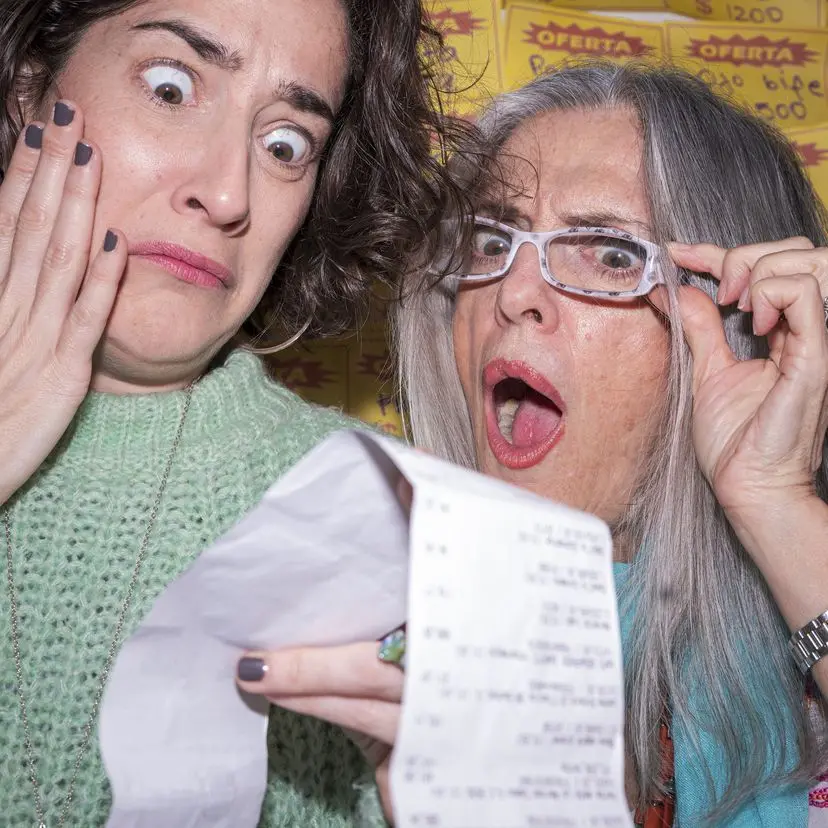
GJ: So, speaking of creativity and out-of-the-box thinking, how did you decide to document this economic theme, which is kind of a nebulous idea for a lot of people, and document it through a lens of absurdity or flamboyance with these very bright and colorful photos?
IW: When you enter a story, you try different things. Sometimes you know what you're going to be doing, but also you need to [use] trial and error. So I did start a little bit more documentary, and then I felt that it was a bit boring, and especially when you speak about economics, no one wants to see that, really. It's part of everyone's daily life, but it doesn't interest most people. So then I thought, no, I need to find a different angle, I need to show economic concepts and scenarios of inflation, like stocking up, different concepts that I wanted to transmit also because I'm an economist, but I'm going to try to show it in a way that is more fun visually. Imagine all your life with inflation, in a way, it's tragic, yes. But in a way, it's part of your life. And so I wanted to show also the strength of Argentines.
At some point I decided that I wanted to show a little bit of nudity because I wanted to show how we feel that we are very exposed and naked with inflation, and like at some point there's not much we can do. We do a lot of things, but you're always gonna lose, unless you're very rich and you can move around your finances, but the masses get poorer and suffer a lot.
So, yeah, I wanted to show this with dignity and fun and color. Often the narrative of South America is depressing, but we're very happy people here, actually. We have the sun every day, and go out. We have strong family values. Yes, there's inequality, there's poverty, there's a lot of corruption and problems, but there's also fun and happiness and joy. So it was more intuitive that I ended up with these images.
"Often the narrative of South America is depressing, but we're very happy people here, actually."
GJ: Yeah, I think that's great that you were able to highlight that side of life. And how was the experience for you merging your backgrounds of being an economist and a photojournalist at the same time?
IW: For me, it was great. I enjoyed it very, very much. Because sometimes I used to think what a bad investment I did with economics, because it was so much time of my life, and then not to do anything [with it]. So I really enjoyed putting together—I think I put together my two professions and my nationality, because being Argentine, I think I have like a Ph.D. in inflation, like everyone around me. So it was great fun for me to actually put together.
I interviewed a lot of people around me, I would just call and ask them lots of questions with the mind of an economist, and ask them [about] their businesses or their daily life, just to make them think, to try to find little interesting stories. So it was a lot of research using my economic background.
GJ: For sure. What was it like for you photographing and having these conversations with your friends and your husband? And how did that inform the project for you?
IW: You know, my husband is available all the time. Sometimes it's easy because this is something that we all live. It was easier to just grab my friends because I know them and I knew with each one, what economic concept we were going to build, because I know their life, what they do. I think I could have shot these pictures with anyone really, because it's part of everyone's life: Everyone stocks up, everyone sees products getting smaller at the supermarket. I mean, I could have done this, shot anyone. It was just a matter of availability and being able to laugh with them and have fun also.
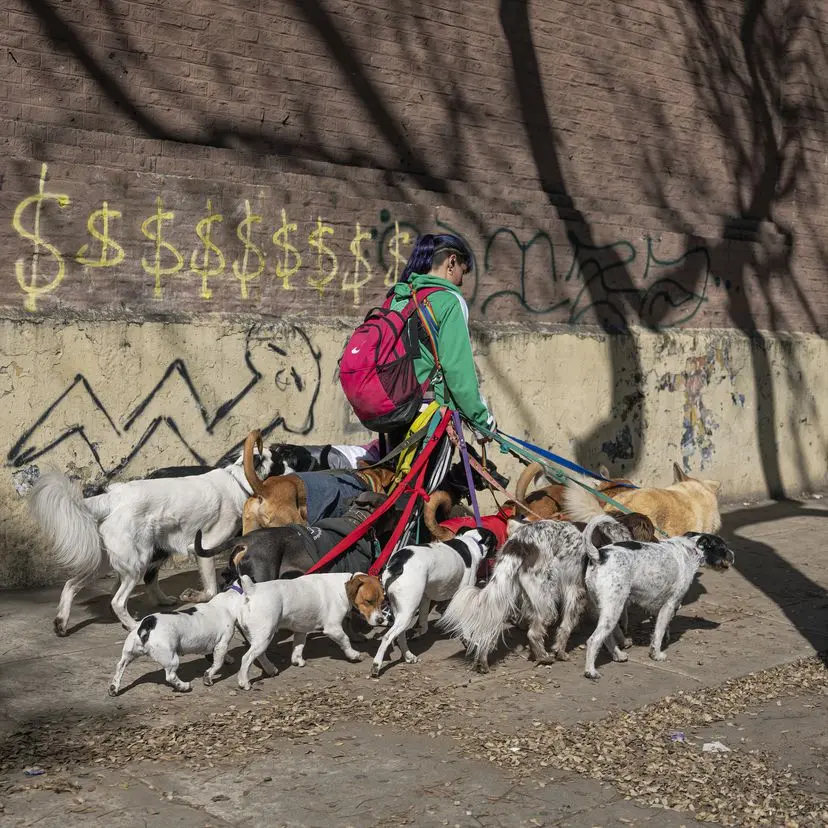
GJ: Definitely. Was there anything that surprised you when you were talking to your photo subjects or any photo that you had an initial idea, but it changed during the process?
IW: Yeah, for example, the dog walkers’ world, I had no idea. Like from the beginning, when I started this project, I knew I wanted to show the real income through the walkers, because it's a very Argentine thing, the dog walker profession. And I think it was very graphic and easy for someone to understand. And this girl I photographed, she reached the limit, she cannot take more dogs because of space on the streets, basically. She cannot go with more than 20 dogs on the street because it's dangerous for the dogs and the people cannot pass. So she told me that she is now studying [to be a] hairdresser. So I realized that she was studying now to be able to do something else because she wasn't going to be able to make a living because she couldn't take on more dogs. So it [inflation] even changes very important stuff in your life.
GJ: That sounds like a great conversation. So how was it for you partnering with different outlets around the world, and in different languages as well? And do you think you showed your work differently for those different audiences? How do you think that distribution will change the story?
IW: I think we live in a global time now. And for me, all my stories I tried to publish in different countries. Each country, of course, has a different angle. Like, El País had an angle much more like, what can an Argentine tell the rest of the world. In the U.K., because they have a lot of sense of humor, they were kind of laughing at the absurdity of what's going on here. I think in Germany, they're more empathic, and the angle [reflected that]. But I also think it has to do with the culture. And I think the U.K. has a higher inflation than the rest of Europe, around 11%, I think it's quite high. So also, it depends on what's going on in that country and how it relates locally to their news. I think nowadays they try to attach local stories to something that's happening there, because that opens the interest of the readers much more.
GJ: Yes, definitely. And what are you hoping that readers will take away from seeing your photos and reading these stories?
IW: I hope that they can understand how dangerous inflation is to societies, because what it does in the long run is something that societies should be really careful that this doesn't happen. This increasing inequality of economics, which also is a mirror of opportunities and education and other things. The less income you have in relation to other people, the less opportunities you have in relation to them, usually you have a worse education as well, which gives you less opportunities in the future. So I think this is a real problem in South America, but the rest of the world should also be really aware that this is a place societies should be afraid of going towards. So I think that, in a way, my project was showing something extreme and bringing a little bit of awareness to this, to the dangers of inflation in the long run.
"I think this is a real problem in South America, but the rest of the world should also be really aware."
GJ: What advice would you give to other photojournalists or journalists who are hoping to document an economic concept like this?
IW: Lots of research. Lots of talking to people, but from every area of society, not only consumers. I spoke to businesspeople, because it's hard for everyone. You need to tackle a story from every angle and for this, you need to do a lot of research, especially if you don't understand how economics functions. Definitely try to think creatively outside the box and try to illustrate in a way that can interest people. Some people are very interested in these stories, because they're businesspeople or people that read about economics, but you can also make the story interesting for people that would not read the story otherwise. And for that, you need to play a little bit, always.
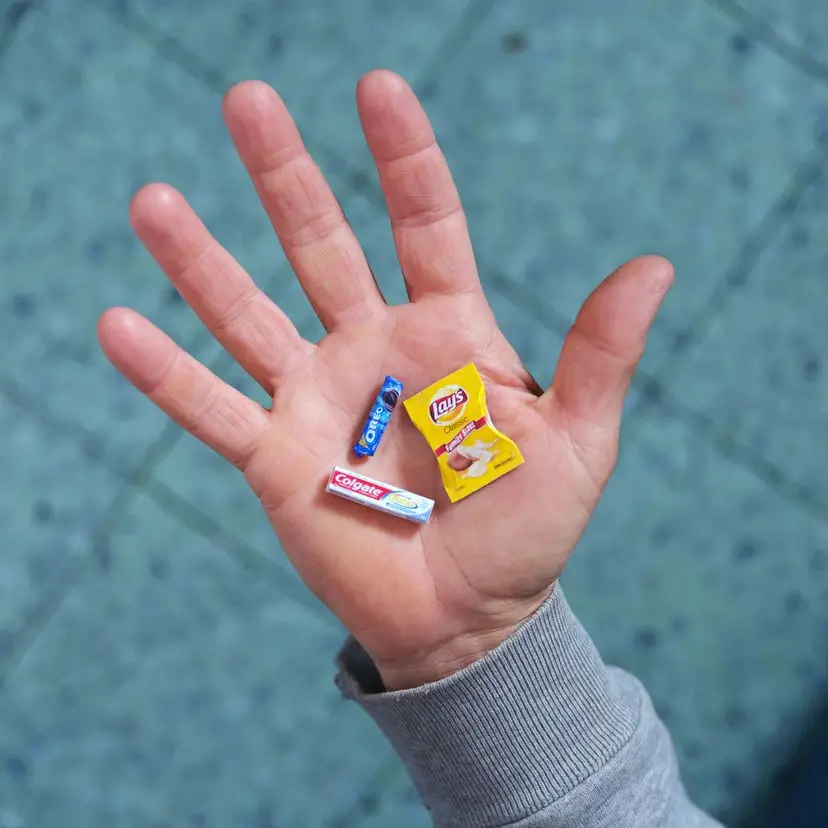
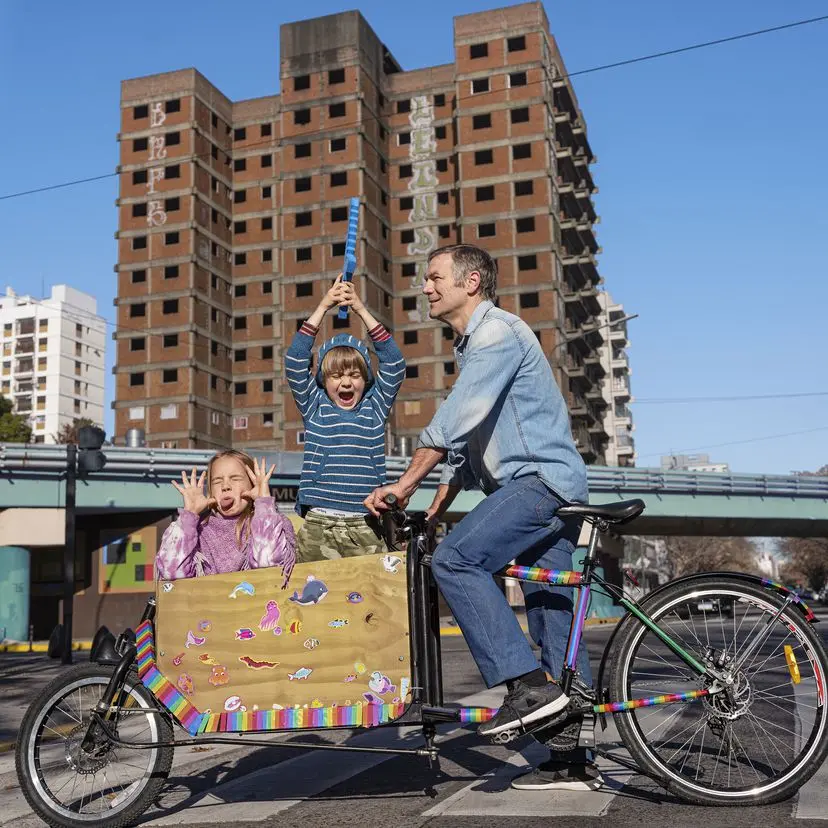

GJ: Yeah. Finally, what do you have next? Do you have more project ideas coming up?
IW: Yes, a lot. I always have like two or three in my mind, but I have to choose. I have more ideas than time. So yes, I want to finish my long-hair project, which I’ve been working on for years. So next year I'm going to go to Ecuador with the National Geographic Explorer grant and photograph the men with long hair in Ecuador, which will be a challenge.
GJ: That sounds great!
IW: So yes, I want to tell stories from my country. There are many interesting stories here. Little time, many stories.
GJ: Yeah. That's great that you have so many ideas. Anything else that you want to add?
IW: Another [piece of] advice for young photojournalists is to try to enter the story with no ideas. I think we are living [in] times of a lot of polarization of ideas, and I think it's much better for the story to enter the story [by] trying to forget your experiences and your ideas and try to really put yourself in other people's shoes. Forgetting your background or your political ideas and try to give voice to your subjects. So this is something that I think is worth trying to do, when you research as well, and when you edit, all the time. Try to leave your ideas behind and try to show the voices of the people that you document. You photograph these people because you're interested in their stories, [so] it's much more pure to tell the story leaving behind your fixed ideas, or your way of thinking, your experiences.
"Try to leave your ideas behind and try to show the voices of the people that you document."
GJ: Did you have a more fixed idea of inflation in Argentina before you started this story that you were able to shed?
IW: Yeah, of course. Here it’s very political, inflation, a political theme. Because it’s often a tool that populism uses, but it’s actually affecting the poor people the most. So it is something political. But I tried to show it from different angles and to show it from the human condition more than from ideas or groups, to try to show we’re all in this.
GJ: Thank you so much.

